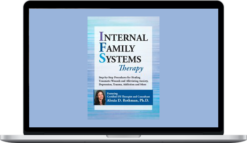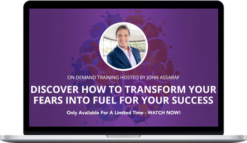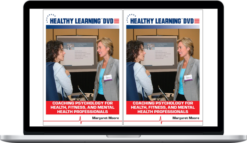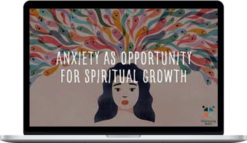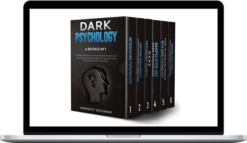Elisha Goldstein – Practical Strategies for Working With Depression
$197.00 $19.00
Total Sold: 1
» Instant Delivery
Description
Elisha Goldstein – Practical Strategies for Working With Depression
Description Of Practical Strategies for Working With Depression
Practical Strategies for Working With the Depressed Mind
A Brain-Focused Approach For Helping Clients Relieve Depression Naturally
Depression destroys lives. Its far-reaching effects can leave families in ruins.
But neuroscience has given us powerful ways to shift the areas of the brain most affected by depression.
That’s why we’re bringing you this short, focused course (at a discount) . . .
What you’ll learn in Practical Strategies for Working With Depression
Practical Brain-Focused Strategies for Working With Depression
Why Depression is a Form of Trauma
- Why depression is the ultimate avoidance strategy
- The four parts of the Depression Loop (and why it’s so hard to break)
- Why the brain reacts to depression the same way it reacts to trauma
- What an enlarged amygdala does to a depressed patient
- Shame: depression’s worst nightmare
- The neuroscience behind the shame-depression connection
- The crucial role of the vagus nerve in depression
How to Ignite the Depression-Battling Part of the Brain
- How to build the implicit memories that will take down depression
- One way to break up old emotional patterns to reduce reactivity
- “Tuning the Heart”: one skill that primes the brain against depression
- The one practice that can lead to a massive left prefrontal shift
- How to reduce the cellular inflammation that’s driven by depression
How to Create a Flexible Mind to Combat Depression
- Rick Hanson, PhD Kelly McGonigal, PhD Ron Siegel, PsyD
- The one “guilty pleasure” that powers strong neural connections
- How “play” affects the nervous system in a client who is depressed
- What happens to the self-critic in both playfulness and depression
- How to rewire the cognitive processing that gets shut down by depression
- How to activate the “Brain Fertilizer” protein that builds neuroplasticity
The 3 Things You Need to Foster Change in Your Client
- How to integrate the “Three-Legged Stool” approach to reduce suffering
- The one critical skill from childhood that boosts neuroplasticity (and why you may need to relearn it)
- The four key attitudes that lead to growth
One Strategy to Help Your Clients Feel Resilient
- How to help clients experience resilience from the inside-out
- The direct connection between positive decisions and immune functioning
- Why we’re wired to accept negativity (and block resiliency)
Why Your Patient Needs an Adult Play Date
- How a client’s playful memories can transform their childhood narrative
- How “foreboding joy” leads to anxiety
- The survivalist brain and why it protects some clients from feeling “too good”
- How implicit messaging can derail the intervention
How to Help Clients Avoid Falling Into the Deficiency Gap
- Why a client’s values can lead them to greater depression
- How to help clients turn “values into verbs” to enhance brain integration
- Why caretakers might be resistant to compassion work
- How to tailor an intervention for chronically-depressed patients
- Why it’s crucial for the practitioner to match the practice to the client’s level of depression
How to Help Clients Shift From a Fixed Mindset to a Growth Mindset
- Michael Yapko, PhD Ron Siegel, PsyD
- A 4-step process for encouraging positive beliefs
- The slippery slope that takes a client from deficiency to depression
- One tactic for defusing unconscious negative thoughts
- Why visualization is like a springboard for the brain
About Elisha Goldstein

Elisha Goldstein will walk you through the neurobiology of depression and the strategies you can use to naturally break the depression loop
Elisha Goldstein, PhD is a clinical psychologist in private practice, co-founder of The Center for Mindful Living in LA, and author of Uncovering Happiness: Overcoming Depression with Mindfulness and Self-Compassion.
In this short course, Elisha will lead you through practical, results-oriented methods for protecting the brain against depression. With these accessible techniques, your clients will have new tools to build strong bridges back to health.
More courses from the same author: Elisha Goldstein
Delivery Policy
When will I receive my course?
You will receive a link to download your course immediately or within 1 to 21 days. It depends on the product you buy, so please read the short description of the product carefully before making a purchase.
How is my course delivered?
We share courses through Google Drive, so once your order is complete, you'll receive an invitation to view the course in your email.
To avoid any delay in delivery, please provide a Google mail and enter your email address correctly in the Checkout Page.
In case you submit a wrong email address, please contact us to resend the course to the correct email.
How do I check status of my order?
Please log in to HealingCourse account then go to Order Page. You will find all your orders includes number, date, status and total price.
If the status is Processing: Your course is being uploaded. Please be patient and wait for us to complete your order. If your order has multiple courses and one of them has not been updated with the download link, the status of the order is also Processing.
If the status is Completed: Your course is ready for immediate download. Click "VIEW" to view details and download the course.
Where can I find my course?
Once your order is complete, a link to download the course will automatically be sent to your email.
You can also get the download link by logging into your HealingCourse account then going to Downloads Page.
Related products
Total sold: 3




